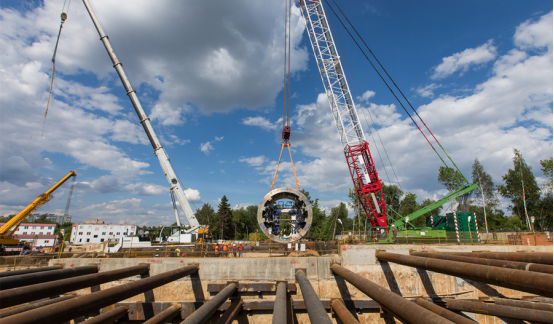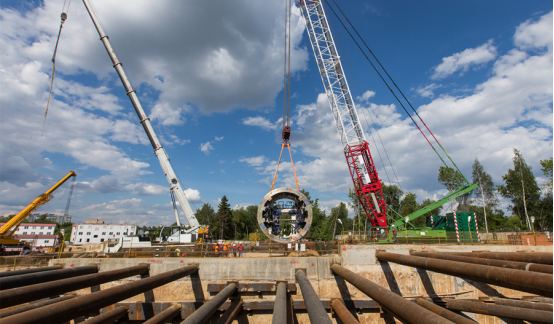
By Xinhua writers Shi Hao, Liao Bingqing
MOSCOW, July 1 (Xinhua) -- When Alexander Zelenkov was stationed in Beijing in the early 1980s, the then Soviet diplomat found the city to be full of bungalows, people using coal stoves for heating during the severe winters, and the streets packed with the legendary bicycles.
But when Zelenkov revisited the city recently, it was as if he was in a different place. He found Beijing to be a "world-class metropolis" where the bungalows had given way to skyscrapers, the coal stoves had been replaced by central heating powered by clean energy, and the bicycles eclipsed by streams of cars on the roads.
The most exciting part of his revisit was the trip he took on the high-speed train from Beijing to Tianjin.
"In just half an hour I was able to enjoy the goubuli (steamed stuffed buns) of Tianjin," he said, talking about the over 100-km journey to the coastal municipality that in the past would take between one hour to over two hours.
Zelenkov is one of the visitors who have witnessed China's "leaping development" as it began reform and opening-up in 1978.
Russian Foreign Ministry spokesperson Maria Zakharova is seen in this file photo. (Xinhua)
"A BLOOMING FLOWER"
Russian Foreign Ministry spokesperson Maria Zakharova called China's transformation in the four decades the blossoming of a flower.
Her father was a diplomat and she went to China with her parents in the early 1980s, when the changes had just started.
She recalls Beijing didn't have many theaters or museums at that time. For entertainment and exploration, her mother used to take her to Beihai Park, the former imperial residence in northwest Beijing that became a public park, and the former residence of former Chinese honorary president Soong Ching-ling, which is now a memorial museum.
Things became a lot different when she went to Beijing again in the 1990s. Zakharova was surprised to see people dressed more stylishly and interested in learning foreign languages.
Zhakharova followed in the footsteps of her father and became a diplomat. Her profession enabled her to visit China frequently and witness the changes that were taking place.
"For me, China's reform and opening-up is not only a political, economic or diplomatic term, but also my childhood memories and feelings," she said.
People's lives have dramatically improved since then, Alexander Ostrovsky, deputy director of the Institute of Far Eastern Studies at the Russian Academy of Sciences, said. "The great economic and social development was due to the strong political will of the Chinese leadership, who were not afraid to start reforms."
In his view, the Chinese government has done a commendable job, drawing lessons from pilot projects and promoting successful measures.
Dmitry Sitlivy enjoys the scenery of West Lake in Hangzhou, east China's Zhejiang Province on Oct. 1, 2004. (Xinhua/Xu Yu)
FROM RECEIVER TO SHARER
Dmitry Sitlivy and his team were invited to China in October 1994. The 63-year-old, then chief engineer of the Russian Scientific Center of Applied Chemistry, came to China as a technological instructor for Juhua Group Corporation, a Chinese company making fluorochemicals in eastern China.
He worked with them for 24 years, which saw Juhua become one of China's major producers of fluorochemicals.
"China's door ... will open even wider. From Juhua, I can see that behind China's prosperity is the hard work of numerous people and enterprises," Sitlivy said.
Back in the 1950s, Soviet experts participated in planning and designing Beijing's subway system.
Today, Chinese engineers are returning the favor, helping Russians build theirs with China having become a global leader in rail transport technology. China Railway Construction Corporation is building a tunnel and stations for the Moscow Subway.
"The Chinese equipment is state-of-the-art. Chinese and Russian engineers discuss and solve problems together, like brothers," Vadim Shishko, chief engineer of the Moscow project, said.
A core part of a shield construction machine is installed at a construction site of Moscow subway in Moscow, capital of Russia, on June 3, 2018. (Xinhua/Bai Xueqi)
INVESTMENT AND TECH TRANSFER
Cotton is a major crop in Central Asia. Cooperation under the Belt and Road Initiative is helping cotton growers in the region increase their yield.
The initiative, proposed by China in 2013, aims to build trade and infrastructure networks connecting Asia with Europe and Africa on and beyond the ancient Silk Road routes. It comprises the Silk Road Economic Belt and the 21st-Century Maritime Silk Road.
The Institute of Cotton Research under the Chinese Academy of Agricultural Sciences has been promoting its newest cotton planting technology in Kyrgyzstan since 2003.
The Chinese technology has boosted cotton production per hectare from 3 tons to 5 tons and consequently, increased farmers' incomes.
In 2014, China's Zhongtai Group and Xinjiang Production and Construction Corps started building a textile industrial park in Tajikistan. The park has fostered a whole industrial chain of cotton planting, processing and sale.
Since the Belt and Road Initiative began to be implemented, an increasing number of Chinese companies and business people have been investing in Kazakhstan, Kazakh political scientist Aidar Amrebaev said. The result has been a remarkable change in Kazakhstan too.
"The cooperation with China promoted Kazakhstan's economic transformation, improved the quality of growth, and created many jobs," Amrebaev said.




 A single purchase
A single purchase









